For a half hour, we were celebrities. Cameras clicked. Dignitaries spoke. Crowds cheered. Television cameras pointed to the seven of us in matching shirts posing in front of our flotilla of kayaks. We got aboard and paddled around the first bend of the creek. The send-off crowd at the creekside resort disappeared behind us, and we were enveloped by cypress trees that lined the narrow waterway. Great blue herons, snowy egrets and little blue herons poked along mats of waterweeds. Alligators slid quietly beneath the glassy surface. Ospreys cried overhead. We were surprised at how quickly Florida can flip-flop from a busy resort to a quiet wilderness. Just south of Orlando—home of Disney World—this band of red-brown swamp water that is Shingle Creek would carry us to the world’s most famous wetlands—the Everglades.
I became involved with Expedition Headwaters as part of my job with the Florida Department of Environmental Protection’s Office of Greenways and Trails. My duties focused on establishing the Florida Circumnavigational Saltwater Paddling Trail—a sea kayak trail around the entire state. When word got out in January of 2007 that a coalition of public, private and nonprofit organizations were organizing a 12-day paddling/hiking expedition from Orlando to Lake Okeechobee to publicize the plight of the upper Everglades, I was asked to participate. It didn’t take much arm twisting. The idea of paddling 140 miles through the Kissimmee Chain of Lakes and Kissimmee River without the customary sting of salt water in my eyes was appealing. After two months of coordinating gear, food, overnight stops and maps for our planned route, our team of seven was ready to begin.
Our paddling route was not a new one. For the Seminoles of the early 1800s, it was a well-traveled waterway—but to our knowledge, we would be the first in more than a century to paddle the entire length in one shot. Much of it would be through a surprisingly remote region, and we hoped for good weather. Late March can be a windy time of year in south-central Florida, and there’s always a chance of severe storms and days of continuous rain. On the plus side, temperatures are normally moderate and the hurricane season has not yet begun.
I was to take GPS readings at important locations so our route could be used as a future paddling trail, complementing the existing Florida Trail footpath along the Kissimmee River. Other team members would fulfill different roles. Dale Allen and Doug Hattaway of the Trust for Public Land would split time on the trip, gauging the need for more public land purchases along the route that could be used for campsites and land trail corridors. Beth Kelso and Ian Brown of the Florida Trail Association would evaluate hiking potentials. Bob Mindick and Julia Recker of the Osceola County Parks and Recreation Department, along with several folks from the South Florida Water Management District, would provide local expertise and support. Mike Jones, a retired navy man, would come along as a private citizen who loved the outdoors.
Starting Down the Chain
A strong headwind blasted us by the time we had followed Shingle Creek to its terminus at Lake Tohopekaliga that afternoon. At nearly 19,000 acres, the lake has an oceanlike feel. We struggled against wind and choppy waves to reach the 132-acre Makinson Island, one of many large islands that dot the Kissimmee Chain of Lakes. We landed on a sandy beach area near a dock and pitched tents in a grassy meadow behind old-growth live oaks that ringed much of the island. The sun shone brightly, warming the air enough for us to be comfortable in short pants, and the constant breeze kept the mosquitoes at bay.
Once slated for a resort hotel and time-share development and now publicly owned, Makinson Island, we quickly discovered, was a place with nesting bald eagles, swooping snail kites and numerous wading birds and sandhill cranes. The island was once home to Seminole Indians. Some suggest the Seminole name for the island was the same as the lake—Tohopekaliga or “fort site.” During the Second Seminole War (1835–1842), thick trees provided the Seminoles with cover, and canoes were kept on both ends of the island, so escape from federal soldiers was always possible.
We fell asleep under the stars to the sound of screech owls, grunting wild pigs, scrounging raccoons and the didgeridoo croaking of pig frogs. At the first light of dawn, we woke to the motorized scream of dozens of tournament bass-fishing boats, racing to their secret spots. Lake Tohopekaliga is a bass-fishing mecca as evidenced by the numerous tracks cut through the weeds by boat propellers. Songbirds, ducks and sandhill cranes took to the air as the high-powered boats raced by. It was time to break camp and continue.
We paddled from Makinson across Tohopekaliga continuing down the chain to Cypress Lake and lakes Hatchineha and Kissimmee. Long ago, winding creeks and cypress swamps connected the lakes, with passage suitable for dugout canoes. But 19th-century steamships were a different matter, so beginning in the early 1880s, canals were dredged between the lakes and, eventually locks were built for flood control. The canals had a dual purpose: they also drained adjacent swamps and floodplains so more land could be used for ranching.
In the past few years, the South Florida Water Management District has purchased vast tracts of former floodplain along the entire watershed—more than 100,000 acres in all at an average cost of $3,000 per acre—so the Chain of Lakes and Kissimmee River can once again pulse with the ebb and flow of wet and dry seasons, thus enhancing the health of wetlands along the lakes and river. The state of Florida and local governments have been buying additional tracts for recreation and wildlife protection. However, complete restoration of the Chain of Lakes basin would not be possible unless entire communities were moved. The canals connecting the lakes and associated locks and dams will remain in operation to maintain enough water for boat traffic and to prevent severe flooding of nearby towns and cities, such as Kissimmee. The locks will be used to create a controlled degree of flooding that will prevent property damage yet mimic natural cycles that are essential to the ecology of the wilderness areas.
While the locks will play an important role in restoring the wetlands, the canals are the least interesting stretches of paddling. Unlike a winding tree-canopied stream, the straight canals take away the mystery of wondering what’s around the bend—you can see a mile or more downstream. The undulating of natural lake and stream shorelines, with their waterweeds and abundant birdlife, was a welcome relief from the alleyways of the canals. If nothing else, the canals were reliably navigable. On one occasion, we paddled the Dead River—natural connector between Cypress Lake and Lake Hatchineha—but we ended up dragging our boats in several sections due to low -water.
We camped at several fish camps along the route. These generally consisted of docks and a ramp, numerous boats, lots of pickup trucks and camper trailers, a small store and rustic outbuildings nestled under arching live oak trees. At Camp Mack, perched on the edge of a side canal in between lakes Hatchineha and Kissimmee, fishermen and hunters sat around a smoldering fire in front of the camp store day and night. The campers there had never seen kayakers along the Chain of Lakes. Airboats and other motorized crafts were the more common modes of water travel. “You gotta be careful with that blue canoe,” said one old-timer to team-member Beth Kelso, nodding to her kayak. “It’s gator mating season, and they’ll think that’s a female gator!”
Jerry Renney serenaded us with song at Camp Mack. Jerry was an early activist with the Kissimmee River Valley Sportsman’s Association, fighting for public access to area waters and trying to clean up and restore the river system. His songs were passionate, nostalgic and heartwarming, sometimes about “when Florida could make you feel small.” It can still make visitors feel small, especially in parts of the Kissimmee valley. Many of the sovereign rights conflicts of the 1980s—mostly with ranchers who were blocking access to some of the lakes—were resolved when the South Florida Water Management District simply bought the land or acquired easements instead of fighting in lengthy and expensive court battles. Jerry concluded, “What’s happened here in my home, the Kissimmee River valley, has made it a whole lot better than it used to be.”
Camp Mack marked the spot where half the group began hiking to Lake Okeechobee—scouting a potential footpath that would link up to the Florida Trail—while the other half of us continued kayaking. We were to meet the hikers each night at a prearranged campsite.
Lake Kissimmee by Kayak
Crossing the massive 35,000-acre Lake Kissimmee, we hit open stretches where two- to three-foot waves crashed over our bows. In most of the lakes, ocean kayaking skills are required. Where possible, we hugged the shore behind a line of marsh, pickerel weed, duck potato and lily pads that buffered the waves. Midges, small mosquito-like insects that swarm but don�t bite, were prevalent, too. Locals call them �chizzy winks.� I had to be careful when opening my mouth, or I�d inhale them. Swallows swooped and dived to feed on the midges. Also in the marshes were fishermen in boats who had gathered in clusters to fish for bream. Their bent poles made it apparent the fish were biting.
Lake Kissimmee is almost completely undeveloped and rich with birdlife. I paused near the shore at one point and observed a crested caracara strolling among cattle. This threatened bird of prey with its unmistakable black hood has strong legs that enable it to easily walk or run on the ground and hunt small mammals, reptiles and amphibians. A flock of glossy ibis flew past�black silhouettes against the sky. I spotted wild turkeys walking across the pasture. They came to the water�s edge and poked up their heads for a look at me in a mutual expression of curiosity. They were all hens, I determined, since their brown bodies lacked the crimson markings of tom turkeys.
Continuing south past mats of lily pads, we heard the cries of wading birds and watched them poke around the shallows. Brown and blue-black snail kites, an endangered species, swooped through tall marsh grass from hidden nests while raptors filled the skies�eagle, osprey and swallowtail kite.
We paddled into a strong headwind to cross over to the privately owned Brahma Island. The island�s 4,000 acres provide habitat for large wild boars and about 100 eagles, the largest concentration of nonmigratory bald eagles in the Lower 48 states. We saw eagles everywhere�in trees, circling in the sky and swooping over the lake and the island prairies.
Cary Lightsey, co-owner of Brahma Island, led us on a driving tour down sugar-sand roads beneath canopies of arching live oaks. Many of the massive oaks were bent and twisted from past hurricanes. Some were nearly 400 years old�mature even when a force led by General Zachary Taylor drove Seminole Indians off the island in 1837 during the Second Seminole War.
A sixth-generation Florida cattle rancher, Cary sold much of his development rights to the state so future generations of Lightseys can carry on the family business and not have to sell the land to developers. His family had always maintained a philosophy of leaving at least 40 percent of their land native. �Florida has a very sensitive ecosystem,� he said, �We�re really just landlords of this land, if you really think about it. I feel like it�s our job to protect it for the people of Florida.�
We stayed in a hunting cabin that the Lightseys normally rent out to hunters. Carl supported the expedition�s goals and was open to the possibility of future kayakers camping near their boat landing. Public land along Lake Kissimmee may provide other possibilities.
Lake Kissimmee was a glassy calm as we left it to enter a flood control lock that marks the beginning of a long canal that is a channelized section of the Kissimmee River.
The Kissimmee River was once a winding 103-mile natural waterway. From 1962 through 1971, the Army Corps of Engineers cut a straight ditch through the river, hoping to better control flooding in the upper system by speeding the flow of water to Lake Okeechobee. As a result, fish, waterfowl and other wildlife drastically declined, and water was no longer being filtered by a slow meandering river channel through thousands of acres of marshlands. Lake Okeechobee received too much water too quickly during the rainy season, and water quality was severely degraded.
Shallow, weed-choked oxbows�the remains of the old river channel�loop out from the sides of the arrow-straight canal. Stopping for a rest break, we climbed tall angular spoil berms of sand created by the canal dredging. Vast areas of wetlands have been filled in by these artificial mounds.
In 1999, restoration of the middle portion of the Kissimmee River began. Thus far, a key dam on the river has been blown up, and more than 15 miles of the original Kissimmee River was restored. Roughly 28 more miles are set to be restored by 2011, and another dam will meet its end. At a cost of more than half a billion dollars, it�s considered the largest true ecosystem restoration project in the world.
After more than a day of paddling canals, we entered a construction zone of the current restoration project. Huge yellow dump trucks rumbled past. They carried dirt from former spoil berms to an area of canal being filled, moving the river back into its old meander. Floating yellow turbidity barriers kept the soil from drifting into the river, but often presented an obstacle for us. The best method to move over them, we learned, was to paddle into them at full speed and shoot over their tops.
As we made a detour around the construction site through an oxbow, several baby alligators as long as my forearm scurried along the bank before the eight-foot-long mother shot off an embankment, belly-flopping into the river. We entered the restored river channel. Serpentine twists and bends through lush marshlands, occasionally bordered by sandy banks and cypress and live oak trees, added mystery and beauty. Meandering. Unpredictable. With no canal to divert flow, we finally felt we were on the Kissimmee River as it had been for eons. The return of seasonal flood waters has helped heal the ecosystem by filtering impurities in the vast marshlands, increasing dissolved oxygen levels in the river and drawing nutrients from the floodplain to help feed the food chain. We counted more than 150 alligators, many of them over 10 feet long. Since becoming scarce in the 1960s as a result of poaching, Florida�s restrictions on the commercial trade of alligator skins have helped the alligator population to rebound.
We noticed more birdlife along the restored river than we�d seen along the canals�limpkins, green herons, yellowlegs, stilts, cormorants and many others. Since the restoration, biologists have observed eight species of shorebirds that had not been seen along the river in 40 years, plus they have documented the return of migratory fowl and an increased fishery. At one spot, the winding Kissimmee resembled a river through a prairie, its marshy floodplain at least two miles wide. Vast, windswept and looking more like the plains of Kansas, the restored Kissimmee River will be a great paddling trail and a boon for bird-watching and sportfishing enthusiasts. Several primitive campsites have already been set up by the South Florida Water Management District.
The Kissimmee led us to Lake Okeechobee, an oceanlike expanse of fresh water that is second in size only to Lake Michigan in the continental United States. Blue water stretched across the horizon. Okeechobee is often referred to as Florida�s liquid heart. Even though its perimeter has been diked and the level and flow of water through it is carefully controlled, it is still a magnificent body of water. Across the vast blue lake are agricultural lands and then the famed �river of grass,� a shallow 50-mile wide swath of sawgrass marsh, tree islands and slow-moving water that creeps south toward the mangrove fringe of Florida�s southern coast.
We rounded a point and landed in black muck at the Okee-Tantie Recreation Area. With our exploration of the route finished, the work of creating a top-notch recreational paddling and hiking trail through the Kissimmee Chain of Lakes and Kissimmee River will continue. In the near future, more people will be able to enjoy the northern Everglades as we have, hiking and paddling through a part of Florida that has reclaimed its past.
Trail Progress
Building on momentum created by the Expedition Headwaters journey, the Everglades Headwaters Working Group is seeking to further recreational resources for paddling, hiking and bicycling along the Shingle Creek/Kissimmee Lakes/Kissimmee River corridor. A primary feature is the establishment of a 140-mile paddling trail, largely following the route of Expedition Headwaters. The coalition includes the Trust for Public Land, the Florida Department of Environmental Protection, the South Florida Water Management District, several city and county governments, and various private sector entities.
A major focus is on buying land in the upper reaches along Shingle Creek and Lake Tohopekaliga, an area in the throes of rapid urbanization. Both Orange and Osceola counties have already begun purchasing land for passive recreation along the trail corridor and the Trust for Public Land is seeking help from the private sector to fill in gaps.
Another goal is to create public campsites below Lake Tohopekaliga as an alternative to the sometimes noisy fish camps. Much of the shoreline in this stretch is prone to flooding, so options have ranged from finding suitable land on higher ground to building camping platforms above the flood zone. Paddlers can currently follow the expedition�s path, but future campsites will provide more appealing stops. Most campsites will be within reasonable paddling or walking distance of each other, about 10 to 15 miles apart.
It is estimated that it will take three to five years for additional campsites, maps and guide texts, and several more miles of wild, free-flowing Kissimmee River to become a reality. Information about the trail is available on the Florida Department of Environmental Protection�s website: www.dep.state.fl.us/evergladesforever/eh/default.htm


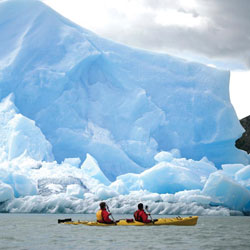
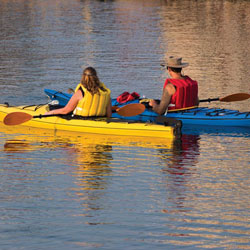

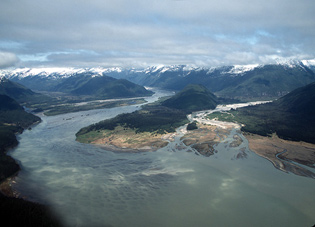
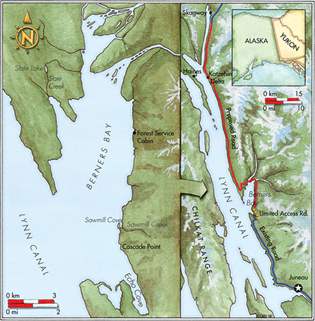
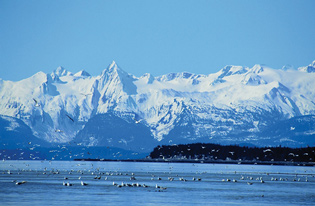
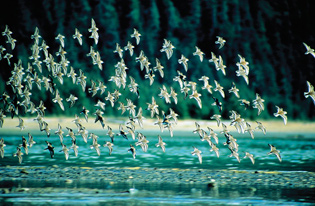
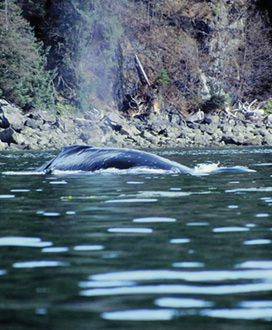
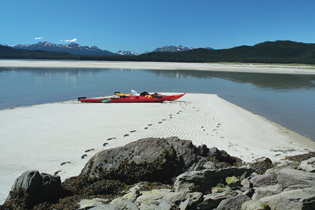

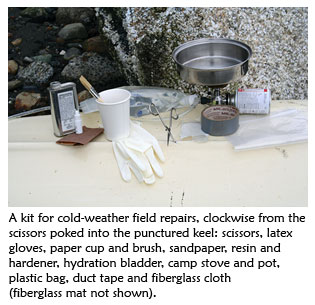
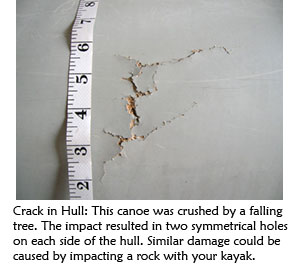 Polyester resin is not healthy stuff. Avoid getting it on your skin or breathing its vapors. You’re unlikely to be carrying a respirator in the field, but take whatever precautions you can when doing your repair. Wear latex or nitrile gloves from your first aid kit. Set up your workplace where there’s a breeze, and stay upwind of the vapors. The materials are also toxic to the environment, so pack out any waste from the fiberglass repair process, regardless of how small it is. Never burn your fiberglass waste—if you pack it in, pack it out.
Polyester resin is not healthy stuff. Avoid getting it on your skin or breathing its vapors. You’re unlikely to be carrying a respirator in the field, but take whatever precautions you can when doing your repair. Wear latex or nitrile gloves from your first aid kit. Set up your workplace where there’s a breeze, and stay upwind of the vapors. The materials are also toxic to the environment, so pack out any waste from the fiberglass repair process, regardless of how small it is. Never burn your fiberglass waste—if you pack it in, pack it out. You don’t want to risk burning the kayak by using the flames of a stove or campfire, so the safest way to do this is with a hydration bag filled with hot water.
You don’t want to risk burning the kayak by using the flames of a stove or campfire, so the safest way to do this is with a hydration bag filled with hot water. If you’ve worked quickly, your hot water bag will still be warm. If the water has cooled too far, pour it into a cook pot, reheat it to lukewarm and fill the bladder again. Even on a cold day, you shouldn’t use a bag that is hot to the touch—if you do, your resin will cure too quickly and may develop cracks. Water near your body temperature will be warm enough to do the job.
If you’ve worked quickly, your hot water bag will still be warm. If the water has cooled too far, pour it into a cook pot, reheat it to lukewarm and fill the bladder again. Even on a cold day, you shouldn’t use a bag that is hot to the touch—if you do, your resin will cure too quickly and may develop cracks. Water near your body temperature will be warm enough to do the job.